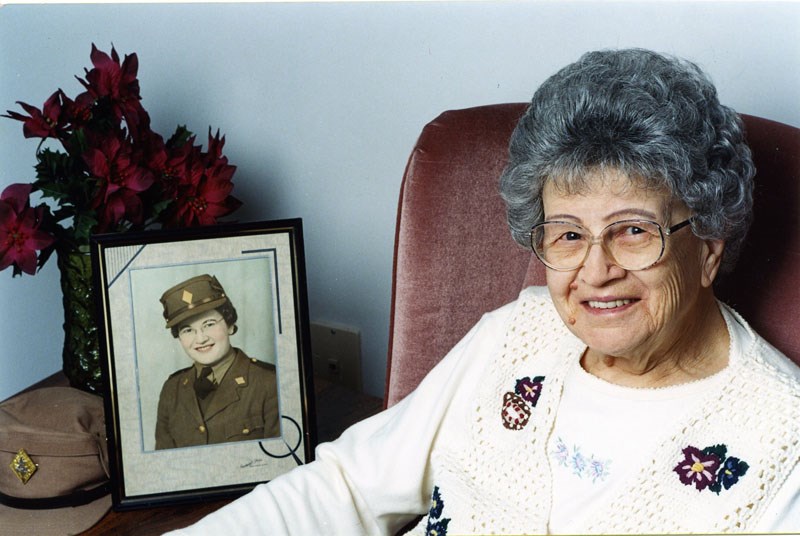Dorothy Chartrand is pretty jovial when she talks about getting bombed during the Second World War.
A Métis woman born in St. Albert, Chartrand was one of the first aboriginal women from Alberta to serve overseas during that conflict. On Nov. 11, she became the third person ever to receive the Aboriginal Veterans Society of Alberta Patron's Award in recognition of her heroism.
The Germans were lobbing V-1 rockets at London from Holland at the time, Chartrand recounts in the documentary Grandmothers of the Métis Nation. Every night she and her fellow soldiers would huddle in their beds near Trafalgar Square as the wail of air raid sirens followed the distinct buzz of rocket motors.
"It was kind of eerie, kind of scary," she said. They would all lie still and silent, wondering where the bombs would land. "You could hear a pin drop, I'm sure."
Once they heard the explosion, she continued, they knew they were safe and everyone went back to sleep. "Or got up and rushed to the bathroom," she added, with a chuckle.
Chartrand went to London, England at a time when parents were sending their kids away from it to escape the bombs raining from the sky, said her niece, Judy Iseke, who accepted the award on Chartrand's behalf just after the Remembrance Day ceremony at St. Albert Place last Friday.
"She put her life at risk for this country and for freedom," Iseke said.
From sergeant to historian
About 50 people gathered to honour Chartrand and view part of the Grandmothers documentary, which Iseke produced.
Born on Aug. 15, 1918, Chartrand was one of 13 kids born to Pierre and Justine Bellerose, both of whom had lived near St. Albert since about 1886.
"I loved having so many brothers and sisters in my family," Chartrand writes in Our Women in Uniform. "Having them meant I was never lonely and always had a friend to play with."
Chartrand finished high school and got a job with the Alberta Department of Trade and Industry. This was during the war, she writes, and many young people were joining the military.
"I was patriotic and wanted to serve and to help protect my country," she writes, so she joined the Edmonton branch of the Canadian Women's Army Corps, becoming the ninth woman to do so.
Aboriginals were not allowed in the army in those days, Iseke noted, so Chartrand had to deny her Métis identity to join up. It was also the first time in history that women had been allowed in active service, meaning the army had to come up with uniforms for them.
"The uniforms … were so stylish," Chartrand writes, featuring an olive drab suit and skirt, brown shoulder tabs and shoes, and a French kepi-style hat. Nylons were strictly forbidden, she noted, as was bright nail polish.
Chartrand was so proud of her uniform that she wore its overcoat for years after the war, said Iseke. "They were proud of the uniform and proud to be in them."
Chartrand was deployed to England in late 1944 to work as an administrator in London's Canada House. Her superiors were pleased to find that she and the other women were much better typists than the men they had replaced, she noted in the documentary.
Chartrand finished the war as a sergeant and the newlywed wife of her first husband, Sgt. Robert Atchinson. She went on to become a historian, doing extensive genealogical research and contributing much to St. Albert's history book, The Black Robe's Vision. Now 93, she resides in the Kipnes Centre for Veterans in Edmonton.
Canadians are a quiet people, said Thelma Chalifoux, patron of the Alberta Aboriginal Veterans Society, and don't do enough to recognize veterans like Chartrand.
"They are heroes. They give us our identity and, most importantly, they give us role models."
Chartrand's uniform is now on display at the Musée Héritage Museum in St. Albert.




